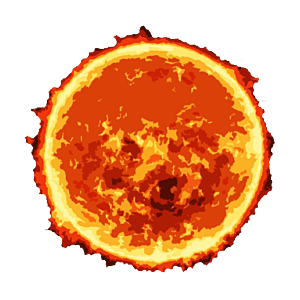The Downlink • Jun 04, 2021
Eclipses: It’s All About Perspective
Space Snapshot

This image from JAXA’s Hinode solar mission shows an annular solar eclipse as seen from Earth orbit. On June 10 people in Greenland, Russia, and central and eastern parts of Canada will be able to see this special kind of solar eclipse. Annular eclipses happen when the Moon is relatively far from Earth in its elliptical orbit. This makes the Moon's apparent diameter smaller than the Sun's, so when the Sun and Moon line up in the sky you can see the edges of the Sun shining around the Moon, creating what’s known as a “ring of fire.” Image credit: JAXA/NASA/Hinode/XRT.
You love space, now take action
This weekly newsletter is your toolkit to learn more about space, share information with your friends and family, and take direct action to support exploration. Anyone can subscribe at planetary.org/connect to receive it as a weekly email.
Mission Briefings


NASA is sending two missions to Venus. Administrator Bill Nelson announced two new missions selected for NASA’s Discovery program, both heading to Venus. DAVINCI+ will analyze Venus’ atmosphere to understand how it formed and evolved, and will determine whether the planet ever had an ocean. VERITAS will map Venus’ surface to determine the planet’s geologic history and understand why it developed so differently than Earth. These will be NASA’s first dedicated missions to Venus in more than three decades. Pictured: Venus imaged by NASA’s Mariner 10 flyby mission in 1974. Image credit: NASA/JPL/Mattias Malmer.

The White House proposed $24.8 billion for NASA next year—an almost 7% jump. The fiscal year 2022 budget request supports many of The Planetary Society’s top priorities, including a Mars Sample Return mission, the NEO Surveyor planetary defense spacecraft, and the Artemis program to return astronauts to the Moon.

Canada has its sights set on the Moon as well. In line with The Planetary Society’s recommendations, the Canadian Space Agency has announced a series of new investments in space science and exploration, including a lunar rover mission in partnership with NASA. The rover will have at least two science instruments and will aim to survive the extreme cold and darkness of a lunar night, which lasts about 14 Earth days. The lunar night’s conditions will pose challenges for future missions in the Artemis program, in which Canada is a partner.

China’s Tianzhou-2 spacecraft successfully docked with the Tianhe space station, delivering fuel and supplies for future astronauts. This is the second of 11 missions China will launch in order to build its multi-module space station in low-Earth orbit. China expects to complete its space station sometime in 2022, after which it’ll function for about 10 years.

NASA’s Ingenuity completed its sixth flight despite a hectic hiccup. On May 22, the Mars helicopter experienced an imaging glitch that caused its automated flight system to become confused. Ingenuity began to make large, unusual oscillations as a result. In spite of the mishap, Ingenuity was able to land itself safely back on the ground, touching down about 5 meters (roughly 16 feet) from its planned destination.
From The Planetary Society


Juno is the mission that keeps on giving. The mission has been in orbit around Jupiter since 2016, making discoveries about the gas giant and sending back jaw-dropping images (these are our favorites). NASA recently granted an extension that will keep the spacecraft active in orbit around Jupiter until 2025. Juno Principal Investigator Scott Bolton joins this week’s Planetary Radio to share some of the most exciting science coming out of the mission, and looks forward to what's to come. Pictured: A Jovian eclipse, with the moon Io casting a shadow on the planet’s clouds below. Image credit: NASA et al.
What's Up

Some parts of the world will be treated to an annular solar eclipse on June 10. No matter where you are in the world, after sunset in the western evening sky you can find Venus low to the horizon alongside a crescent Moon and Mars. In the predawn look for Jupiter and Saturn in the east. Learn more at planetary.org/night-sky.
Defend the Earth!

Take direct action today to support the hunt for dangerous asteroids through our Shoemaker NEO Grant program. Your gift will help our grant winners search the skies for dangerous asteroids to defend our planet from potential impacts.
U.S. residents can also petition Congress and the White House to support NASA’s planetary defense efforts. If you live elsewhere, we encourage you to find the contact information for your government representative(s) and tell them about the importance of planetary defense and the steps that need to be taken by all nations of the world.
Wow of the Week

Although Mars doesn’t experience total solar eclipses, spacecraft on the Martian surface have observed annular eclipses. This set of three images taken by NASA's Curiosity rover shows views three seconds apart as the larger of Mars' two moons, Phobos, passed directly in front of the Sun. Image credit: NASA et al.


 Explore Worlds
Explore Worlds Find Life
Find Life Defend Earth
Defend Earth


